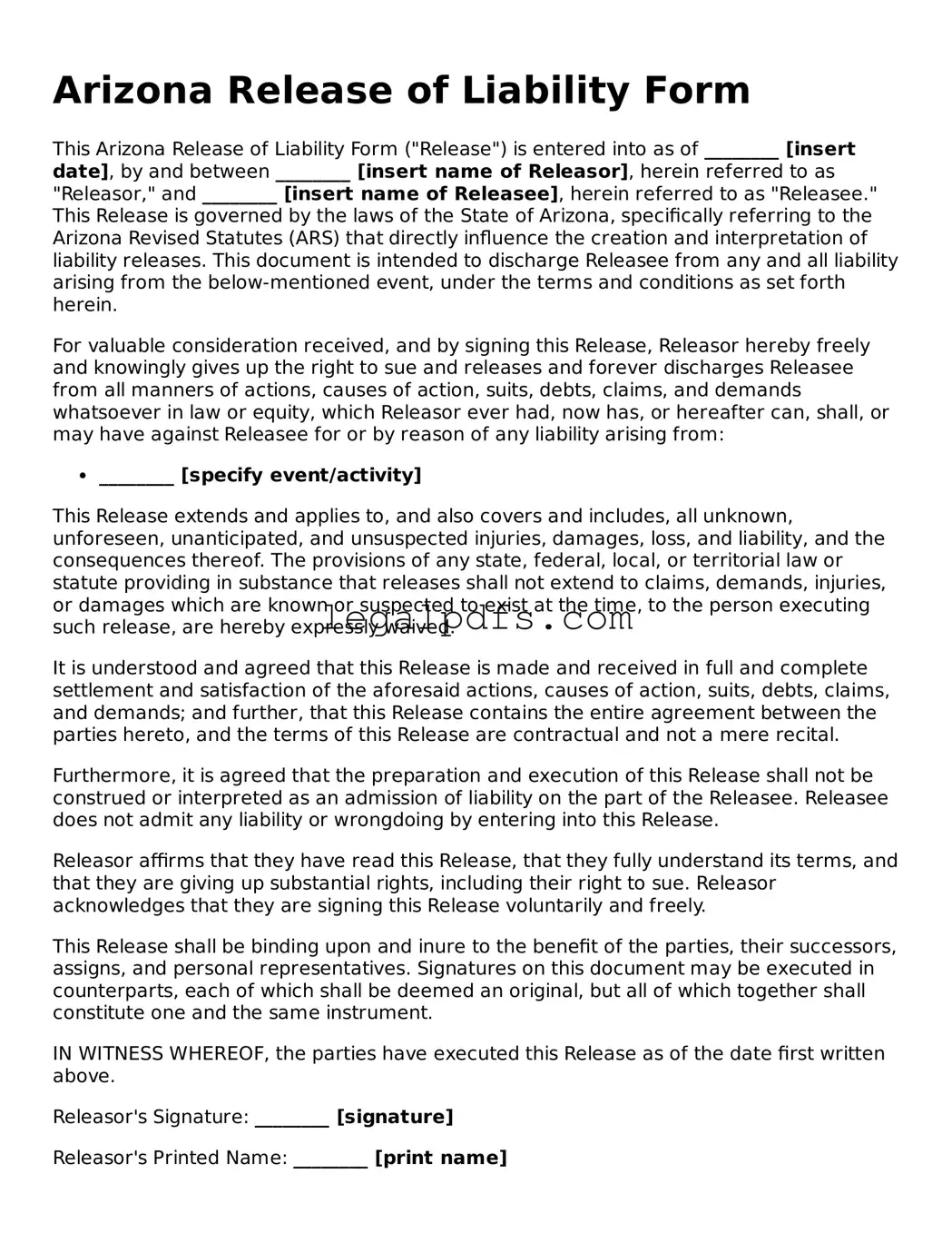Arizona Release of Liability Form
This Arizona Release of Liability Form ("Release") is entered into as of ________ [insert date], by and between ________ [insert name of Releasor], herein referred to as "Releasor," and ________ [insert name of Releasee], herein referred to as "Releasee." This Release is governed by the laws of the State of Arizona, specifically referring to the Arizona Revised Statutes (ARS) that directly influence the creation and interpretation of liability releases. This document is intended to discharge Releasee from any and all liability arising from the below-mentioned event, under the terms and conditions as set forth herein.
For valuable consideration received, and by signing this Release, Releasor hereby freely and knowingly gives up the right to sue and releases and forever discharges Releasee from all manners of actions, causes of action, suits, debts, claims, and demands whatsoever in law or equity, which Releasor ever had, now has, or hereafter can, shall, or may have against Releasee for or by reason of any liability arising from:
- ________ [specify event/activity]
This Release extends and applies to, and also covers and includes, all unknown, unforeseen, unanticipated, and unsuspected injuries, damages, loss, and liability, and the consequences thereof. The provisions of any state, federal, local, or territorial law or statute providing in substance that releases shall not extend to claims, demands, injuries, or damages which are known or suspected to exist at the time, to the person executing such release, are hereby expressly waived.
It is understood and agreed that this Release is made and received in full and complete settlement and satisfaction of the aforesaid actions, causes of action, suits, debts, claims, and demands; and further, that this Release contains the entire agreement between the parties hereto, and the terms of this Release are contractual and not a mere recital.
Furthermore, it is agreed that the preparation and execution of this Release shall not be construed or interpreted as an admission of liability on the part of the Releasee. Releasee does not admit any liability or wrongdoing by entering into this Release.
Releasor affirms that they have read this Release, that they fully understand its terms, and that they are giving up substantial rights, including their right to sue. Releasor acknowledges that they are signing this Release voluntarily and freely.
This Release shall be binding upon and inure to the benefit of the parties, their successors, assigns, and personal representatives. Signatures on this document may be executed in counterparts, each of which shall be deemed an original, but all of which together shall constitute one and the same instrument.
IN WITNESS WHEREOF, the parties have executed this Release as of the date first written above.
Releasor's Signature: ________ [signature]
Releasor's Printed Name: ________ [print name]
Date: ________ [date]
Releasee's Signature: ________ [signature]
Releasee's Printed Name: ________ [print name]
Date: ________ [date]
